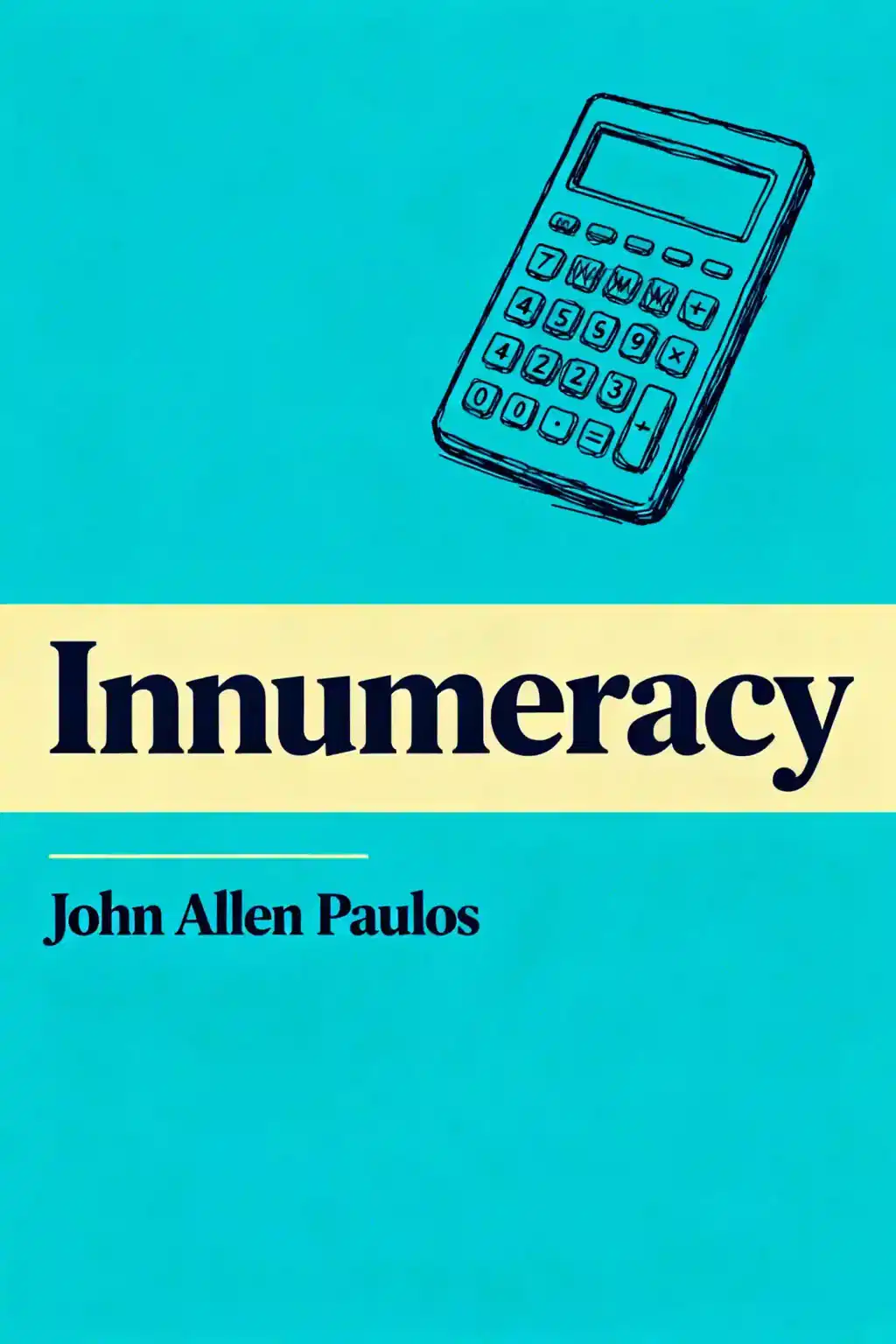What is
Innumeracy by John Allen Paulos about?
Innumeracy examines how mathematical illiteracy impacts decision-making, media perception, and susceptibility to scams. John Allen Paulos uses real-world examples like misinterpreted medical statistics and lottery fallacies to show how poor numeracy skills fuel pseudoscience acceptance and risk miscalculations. The book advocates for better math education to combat these issues.
Who should read
Innumeracy?
This book suits anyone seeking to understand how numerical illiteracy affects daily life, educators aiming to improve math pedagogy, and critical thinkers analyzing media/statistical claims. It’s particularly valuable for readers wanting to recognize and avoid manipulative uses of data in finance, health, or politics.
Is
Innumeracy worth reading?
Yes—Paulos blends humor, relatable anecdotes, and clear explanations to make math concepts accessible. It’s a timeless critique of societal complacency toward numerical incompetence, offering practical insights for evaluating risks, coincidences, and pseudoscientific claims.
How does John Allen Paulos define innumeracy?
Paulos defines innumeracy as an inability to grasp basic probabilities, statistics, and numerical reasoning, akin to illiteracy but with numbers. He highlights how this deficiency leads to flawed personal decisions (e.g., gambling) and societal issues like pseudoscience proliferation.
What examples illustrate mathematical illiteracy in
Innumeracy?
- Stock scams: Victims fail to recognize improbable returns.
- Medical testing: Misinterpreting false-positive rates.
- Coincidences: Overestimating the rarity of events like shared birthdays.
- Lotteries: Believing “lucky” numbers improve odds.
How does innumeracy affect pseudoscience acceptance?
Innumeracy makes people likelier to accept astrology, psychic claims, or conspiracy theories. Paulos explains how anecdotal evidence and cherry-picked “success” stories overshadow statistical realities, creating false patterns in chaotic data.
What educational solutions does
Innumeracy propose?
Paulos advocates for early math engagement through puzzles and real-world applications, not rote memorization. He stresses training teachers to emphasize critical thinking over mechanical calculations and integrating probability/statistics into standard curricula.
How does
Innumeracy explain risk misperception?
The book contrasts feared risks (terrorism) with likelier dangers (car accidents), showing how innumeracy distorts resource allocation. Paulos argues that personalized stories—not data—often drive public anxiety, leading to irrational policies.
What critiques exist about
Innumeracy?
Some argue Paulos oversimplifies solutions to systemic educational gaps or dismisses non-quantitative perspectives. Others note the 1988 publication lacks modern examples (e.g., social media misinformation), though core principles remain relevant.
How does
Innumeracy relate to decision-making?
Paulos demonstrates how numeracy improves choices in finance (assessing loan terms), health (evaluating treatment success rates), and ethics (weighing statistical trade-offs in public policy). He ties clear numerical reasoning to personal and societal empowerment.
What quotes summarize
Innumeracy’s message?
- “Innumeracy lets us be dazzled by pseudoscience and bad journalism.”
- “We’re taught to parse poetry, not probabilities.”
- “Mathematical illiteracy is socially acceptable…but its costs are enormous.”
These lines underscore the book’s call for prioritizing quantitative literacy.
How does
Innumeracy compare to modern books on statistical literacy?
Unlike newer works focused on data science (e.g., Naked Statistics), Innumeracy remains unique for its foundational focus on everyday math pitfalls. It’s less technical than academic texts but more rigorous than pop-science primers.














